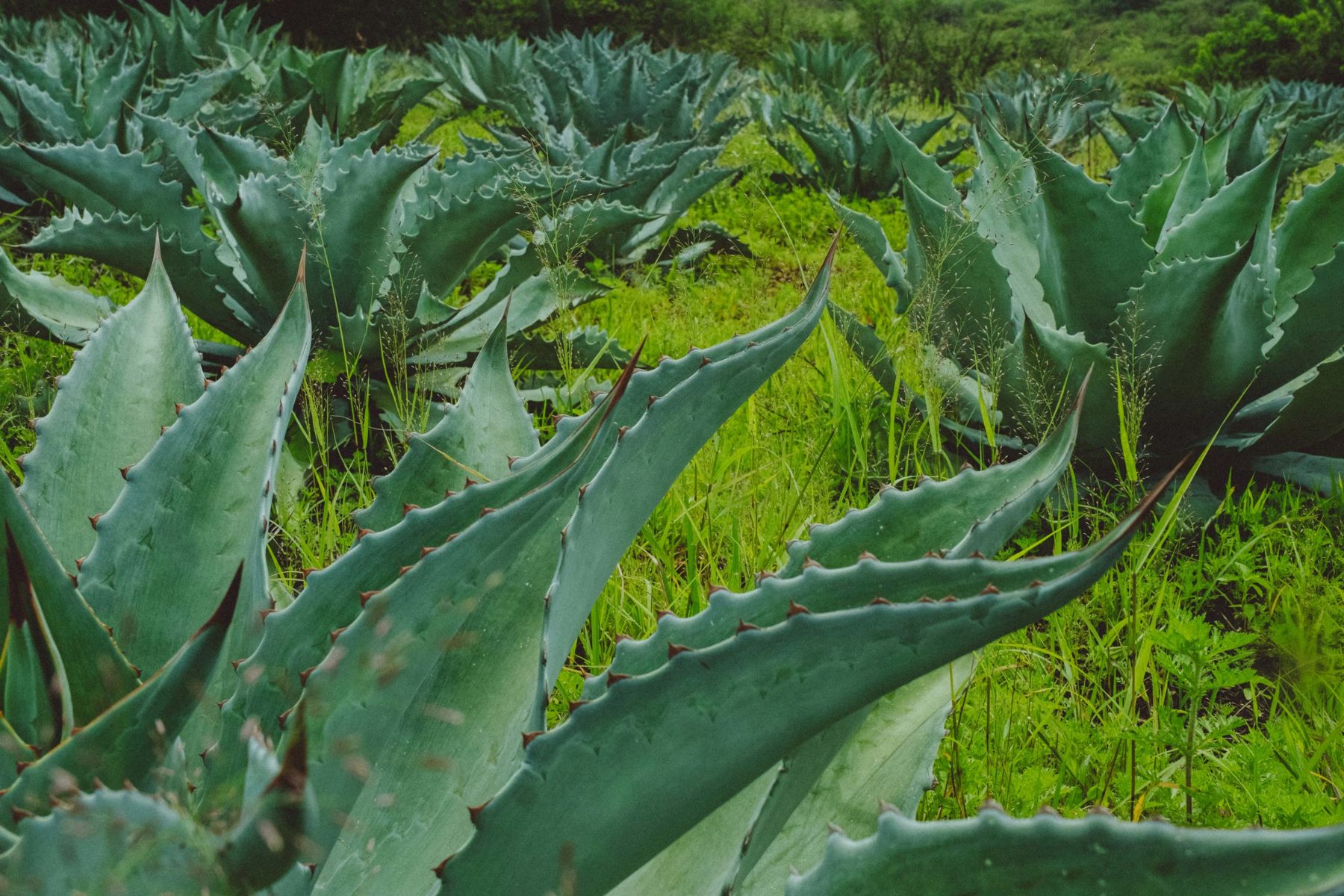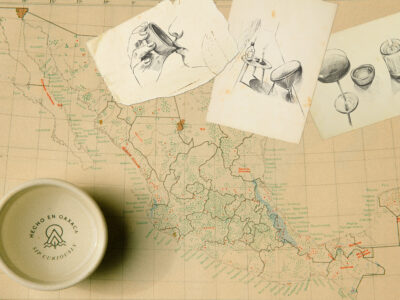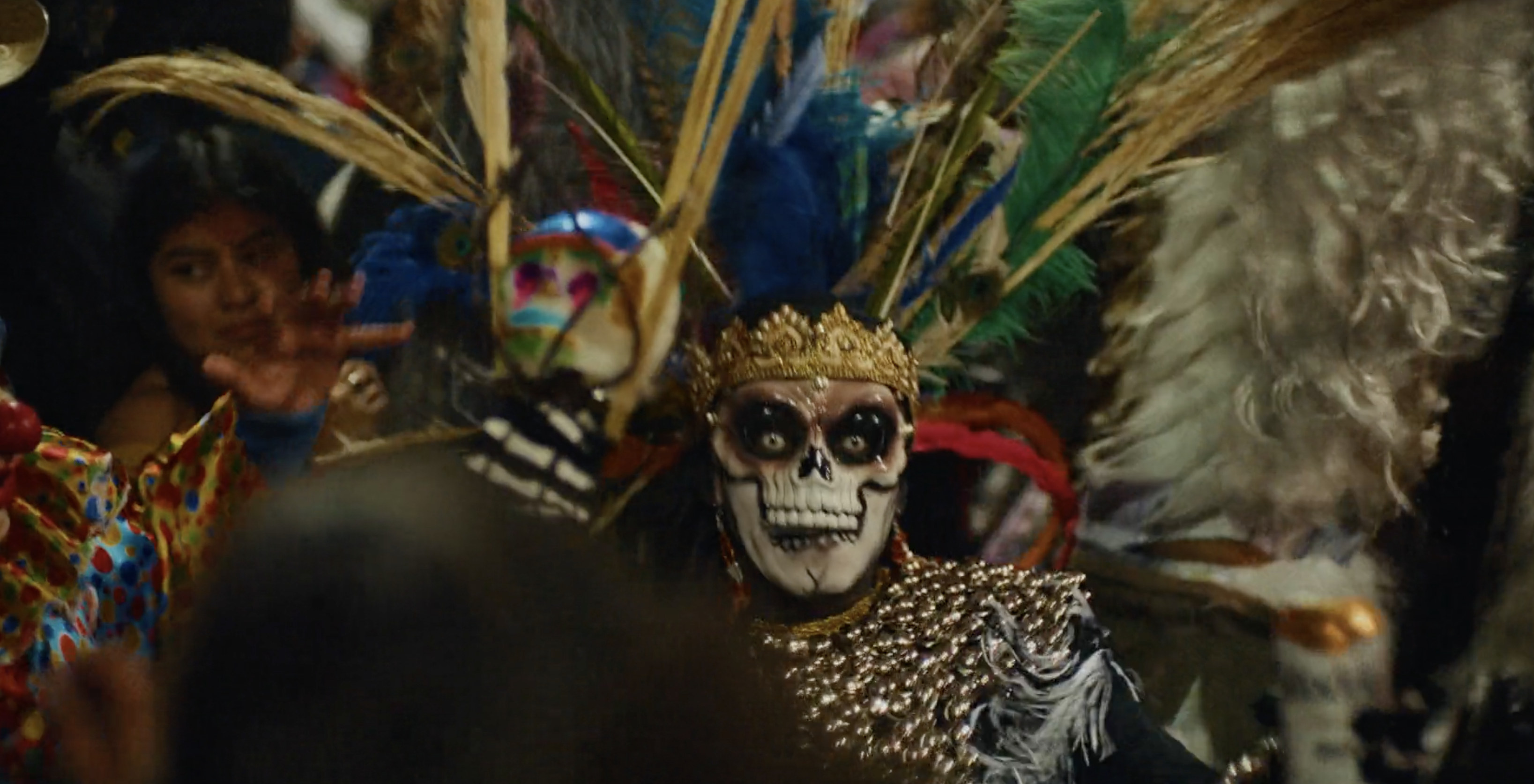Many curiosities swirl around mezcal. What is it? What’s it made of? Is it hallucinogenic? Is it medicinal? Why are there so many types of mezcal? What makes a mezcal mezcal?
(To get one of the basic ones out of the way: No, it’s not tequila. Learn more about their differences.)
For the moment, we’re going to zoom in on the many types of mezcal. Mezcal is made from the elegant, enduring, and awe-inspiring agave plant. While there are more than 250 known species of agave plant in the world, only about 30 of them can be used to make mezcal.
And even this is a brilliant variety. Mezcal—just like wine—expresses terroir, and that is one of our favorite things about it. Each expression of mezcal holds its own flavor profile: subtleties hidden between sips hint at the agave species’s habitat and history—and the artful hand of its Maestro Mezcalero.
However, as any mezcal aficionado will assure you, the production method of a mezcal plays a much more important role in a mezcal’s final flavor profile than the agave plant does, even though it’s these naturally occurring flavors that lay the groundwork. We are always guided most by the characteristics inherent to one species of agave or another. From there, Maestro Mezcalero Don Fortino Ramos perfects his method of artisanal mezcal production only after he understands the agave he’s working with.
Espadín
(Agave Angustifolia)
If you’re new to mezcal, the varietal you’ve probably tasted is Espadín. Espadín is the most commonly sourced species of agave used to make mezcal, making up 80-90% of all mezcal production. This is because it’s naturally less fibrous, making it easier to mill after roasting, plus its comparatively short growth period (6-8 years).
In The Lost Explorer’s Espadín, grown eight years to maturity, you’ll find notes of sweet apple, ripe fruits, and freshly chopped agave, with the characteristic smoky mesquite finish of a mezcal nestled toward the back. It’s subtle, smooth, and definitely smoky, but that part doesn’t rush to center stage. Once you’ve experienced the other flavors, the smoke catches you. This is an example of how you can taste the Maestro Mezcalero’s hand at the craft, while also noticing how the shaping of flavors brings out the natural notes of the Espadín Agave species.
Tobalá
(Agave Potatorum)
Mezcal made from Tobalá agaves (scientific name Agave Potatorum), whose broad leaves sport sharktooth-like spikes around their perimeter. It’s very rare because the growth of these agaves is particularly challenging, plus they are much smaller than other agaves used to make mezcal. While Tobalá agave prefer high altitudes and prefer shaded areas, a variety of Tobalá called some varieties of Tobalá Chino can grow in the sun (this is the type that we use at The Lost Explorer), although the sunbathing Tobalás do take longer to reach maturity. Tobalá agaves also cannot reproduce asexually and therefore they rely on bats or birds to help spread their seed. The Tobalá agave is also only possible to grow from seed, as the small plants don’t produce hijuelos (small agave “pups” that grow around the mother agave in other species). We harvest our Tobalá agaves once they’ve grown for 10 years. The plant itself is quite small, so it requires more piñas to be harvested to make up for the sugar and volume.
Salmiana
(Agave Salmiana Crassispina)
Massive in stature, wild Salmiana agave can grow up to 6 feet tall and as wide as 12 feet. It enjoys dry, sunny habitats with almost chalk-like soil 1,000 to 7,800 feet above sea level in Mexico’s highest plateau, San Luis Potosi. The sheer size and resiliency of this maguey leaves us in awe. Its flat, deep green leaves appear at certain glances to almost have a serpentine character of movement to them. We harvest our Salmiana agaves after 12 years of growth. From there, Maestro Fortino has crafted a very unique Salmiana mezcal, with just the right balance of herbal and spicy notes.
Jabalí
(Agave Convallis)
Jabalí is a bit of a mysterious agave. It’s considered by many to be the most exotic of all mezcals, not because of the rarity of the actual agave (quite the opposite, actually—the Jabalí agave is very abundant in its preferred habitat of rugged, rocky cliffs), but rather how untamable it is during the mezcal production process. During the fermentation stage, Jabalí agaves create a very unmanageable foam, usually causing issues with overflowing fermentation tanks. Only a few maestro mezcaleros and mezcaleras know the secret of how to select the right Jabalí and how to navigate the odyssey that is to turn it into a smooth and beautifully expressed mezcal.
The Lost Explorer Jabalí is triple distilled and made from Jabalí agaves grown for 10 years before reaching maturity. On the palate, this expression brings fresh herbs, bright citrus, and hints of pepper.
The Many Others
There are many, and they each carry beautiful, unique flavors. Just a handful of other names you might see out there are Cuishe, Madrecuixe, Tepeztate, Arroqueño, Tobaziche, and Barril, with some taking even more years to reach maturity before they can be harvested. The years, the habitats, the region—and, yes, still the hand of the producer all come through in the palate in their nuanced and distinctive ways.
So, next time you’re sipping mezcal, we invite you to explore the flavors. Sip Curiously. Past the signature smokiness you expect from mezcal, what other notes do you taste? Smell? Imagine the habitat and the hands that created the mezcal. And next time you’re in Oaxaca, we invite you to our palenque to visit, see the process, and meet some of the beautiful agave species in the middle of their years-long growth.



